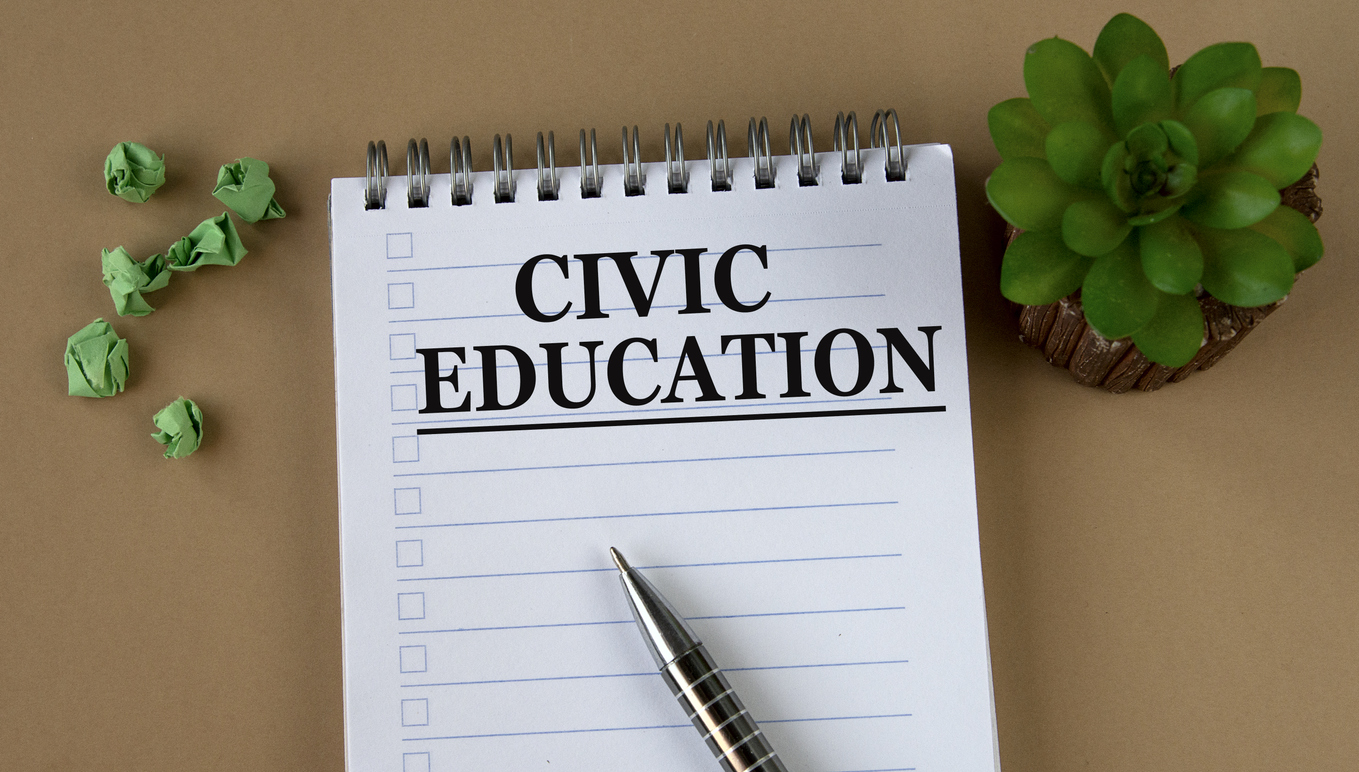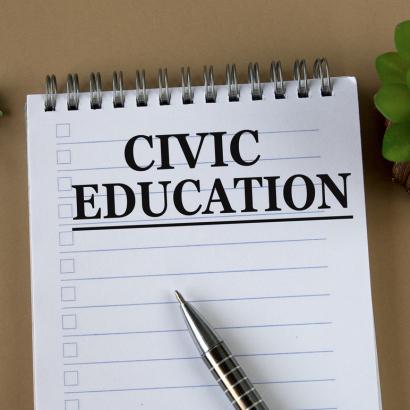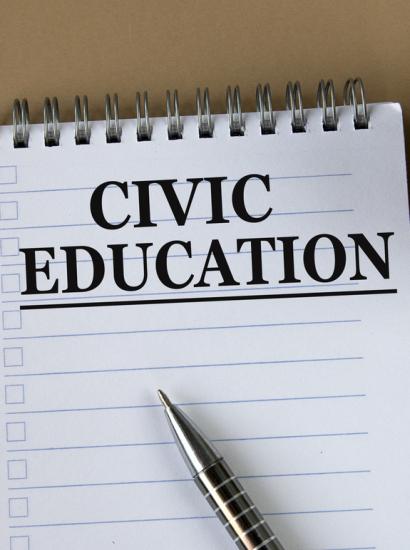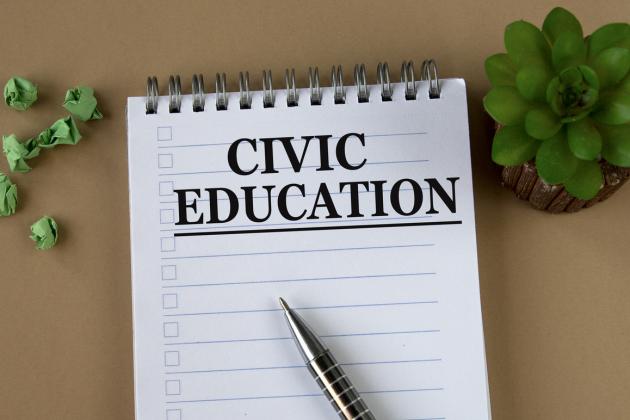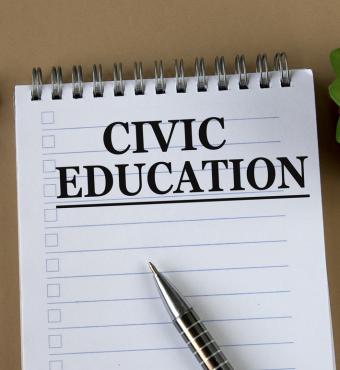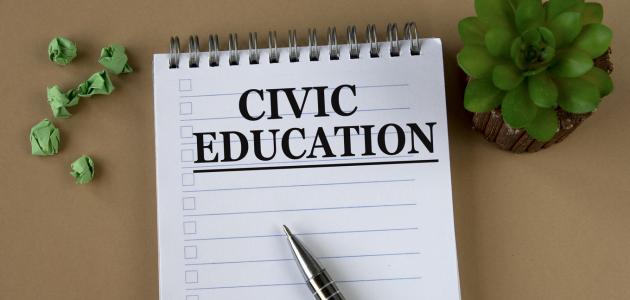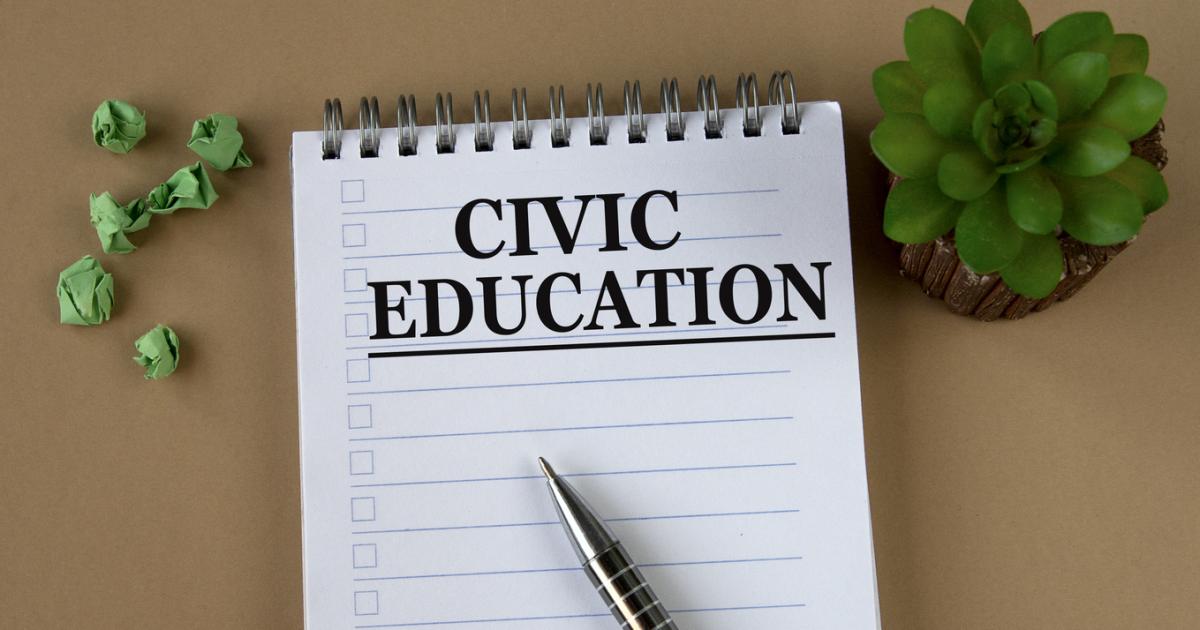This essay focuses on A Republic, If We Can Teach It: Fixing America’s Civic Education Crisis, a new book by Jeffrey Sikkenga and Hoover research fellow (emeritus) David Davenport. Order here.
The state of civic education in America is perilously low, but the stakes are incredibly high. If, as many say, we need to undertake strong measures to strengthen or even save American democracy, the single most important thing we could do is to require more and better teaching of civic education and American history.
One need only look at the latest “Nation’s Report Card” testing, which shows that only 23 percent of eighth-graders are proficient or better in civics and a mere 14 percent in US history, to see the depth of the problem. Not all states even require civics courses anymore and many provide precious little: a single semester course in high school, which is too little, too late. Civics and history are usually taught with boring or even biased textbooks with an emphasis on memorizing dates and events rather than creating good citizens.
The touchstones: more and better
Improving civic education boils down to two basic ideas: more and better. The need for more civic education is both obvious and a goal around which people with different points of view could rally. We need more civic education at home. We need more in elementary and middle school, where history and civics have too often given way to other subjects. We need more than just a single one-semester government course in high school.
Second, we need better civic education. We understand there will be arguments about the exact content of civic education, and political agendas are likely to raise their heads. Still, it is possible to reach some agreement on what educational approaches will lead to the best possible teaching.
More: the family’s role
In his farewell speech, Ronald Reagan chose to emphasize the importance of citizenship and civics. He spoke of the need for “an informed patriotism” among America’s citizens, noting that “all great change in America begins at the dinner table.” Reagan felt it was vital for the future that parents share with their kids “what it means to be an American.”
How to do this? Let us count the ways. Simply talking about America and its stories is one important way. In most families, kids are happy when parents read to them but even happier when they tell stories. Reading stories to children about America and some of its heroes and holidays is another great way to introduce them to civic education. Even discussing current events at their level can be a valuable connection to civics and history. Taking children along on civic and political outings—whether to vote or to a rally—can help them see the importance of this in the family. Summer field trips can easily include teachable moments by visits to national parks, monuments, battlefields, and the like. Since values are better caught than taught, modeling educated citizenship for children is itself a crucial role for parents.
Elementary and middle school
As noted above, civics has been all but lost in the elementary school curriculum. As in the family and home, however, the early grades are the time to plant the roots of civic interest and importance. The right model is a layer-cake approach to the teaching of civic education: we start in kindergarten with a base layer that is age-appropriate, and we build on that in every grade as students are able to understand and handle more. Young children love stories, and this is a great way to begin their civic education with compelling stories about America and its heroes.
Since the middle school curriculum is generally less prescribed than high school, it would seem to be a good opportunity to do more with civic education. A few states have decided to add a civic education course to the middle school curriculum. Florida was an early adopter of a one-semester course, and it has seen improvement in its civics test scores. Alabama and Indiana have such courses in middle school, and New Jersey added such a requirement beginning in the fall of 2022. A new civics bee is creating excitement about the subject among middle school students.
High school
It’s difficult to believe that not every state requires at least a one-semester high school course in civic education. That would seem to be the absolute minimum a state should do, and yet, we are still several states short of 100 percent—a gap that simply must be closed. Beyond that bare minimum, however, there are a couple of other ways to increase the emphasis on civic education in high school. One would be to require a full year of government and civics, not just a single semester. Such a course would need to include attention to the primary documents and texts of the American founding, especially since many states do not require a high school history course in the founding.
Another way to increase the emphasis on civic education in high schools is through testing. At a minimum, states should require the NAEP tests on US history and government, now administered only in the eighth grade, in the twelfth grade as well. Other tests may also prove helpful. For example, a number of states have begun requiring that students pass the civics portion of the same test that immigrants seeking citizenship must take.
Better: the curriculum
People will differ on how to improve civic education. Although the philosophical and political minefields are perilous, there are ways people can agree on that would make the teaching of civic education better. For example, civic education should be an “all hands on deck” project, not just a school curriculum. Civic education needs to be embraced and encouraged in families and civic associations and by government and other leaders in our society. It needs to be understood as a high priority for the nation, embraced and encouraged by everyone. Civic education needs to be “caught” as well as “taught.” The layer cake approach to civics curriculum is reasonable and objective.
Another path to better civic education is to pay heed to the pedagogical questions. Like most subjects, civic education is best introduced with the “what” questions that are so basic to understanding everything else. Then as students grow older and have stronger powers of reasoning, the “how” questions become more pertinent. Finally, a good civic education prompts students to ask and think about “why” our democratic republic works as it does. Reducing civic education to memorizing a bunch of dates and events shoots way too low on the educational quality target. Although addressing the deeper “why” questions requires a base of civic knowledge, those are the questions that excite and motivate students to become better citizens—which is after all, the real goal of civic education.
Using primary documents to teach civics and history leads to better civic education. Textbooks can lead to political controversy over what to include and exclude. They tend to stay with the lower-level “what” or “how” questions without really addressing the “why.” They also risk the problem of presentism: by bringing the past to us rather than making us go to the past, we continue to wear our twenty-first-century glasses to understand the people and issues of a different time. Far better is to ask students to remove those glasses and travel back in time to read important speeches, debates, laws, and documents and study events of the time. This approach to teaching history and government creates far more excitement as students learn and debate the issues of that time. And, most important, it invites students to draw their own conclusions—not those of a textbook author or teacher.
Conclusion
I close with bad news and good news about civic education in America. The bad news is that the current state of civic education is poor—in fact, alarming. With other subjects pushing civic education out of the curriculum, very little civics is taught in the elementary and middle school years, and the typical one-semester course in high school is too little, too late. The same is true of US history. Test scores confirm that students are not even “proficient” in their understanding of US history, government, and civics.
But here’s the good news: we do not have to sit back and wait for a miracle cure. We do not need to wait for the gridlocked federal government to impose some kind of one-size-fits-all fix. We won’t need to depend on a billionaire to rescue civic education by investing tons of money in it.
Rather, improving civic education depends on many small and medium steps by a wide variety of people, not a big fix by a few. As Ronald Reagan said, it begins with parents at home—reading great books about the American story and its characters, taking their kids to visit historic sites, and talking about national holidays and their purpose. Community civic associations of all kinds can reinforce that message.
Then in schools, beginning in kindergarten, we start to build the layer cake of civic knowledge and interest. States should develop goals and standards for introducing age-appropriate subjects and materials in elementary school right on through middle school or junior high school. In high school, every state should have a one-semester course in civic education at a bare minimum, but a full-year course in civics along with three years of US history—including the American founding—should be the goal. The key questions in high school, based on the work that has already been done in earlier grades, should be the “why” questions. The use of primary documents in teaching in high school should be emphasized. Once again, the NAEP test should be required in twelfth grade; other tests, including perhaps the citizenship test, could supplement that.
If we can do those things, we will be well on our way to improved civic education and, more than that, better prepared citizens—even, as Reagan put it, informed patriots. It is worth doing for its own sake, but such a movement will also improve our republic with greater engagement, trust, and understanding for the challenges we face. As James Madison rightly said, “A people who would be their own governors must arm themselves with the power that knowledge brings.” More and better civic education will not fix all our nation’s problems, but it has the possibility to greatly improve this experiment in self-government that we love and wish to see sustained.







